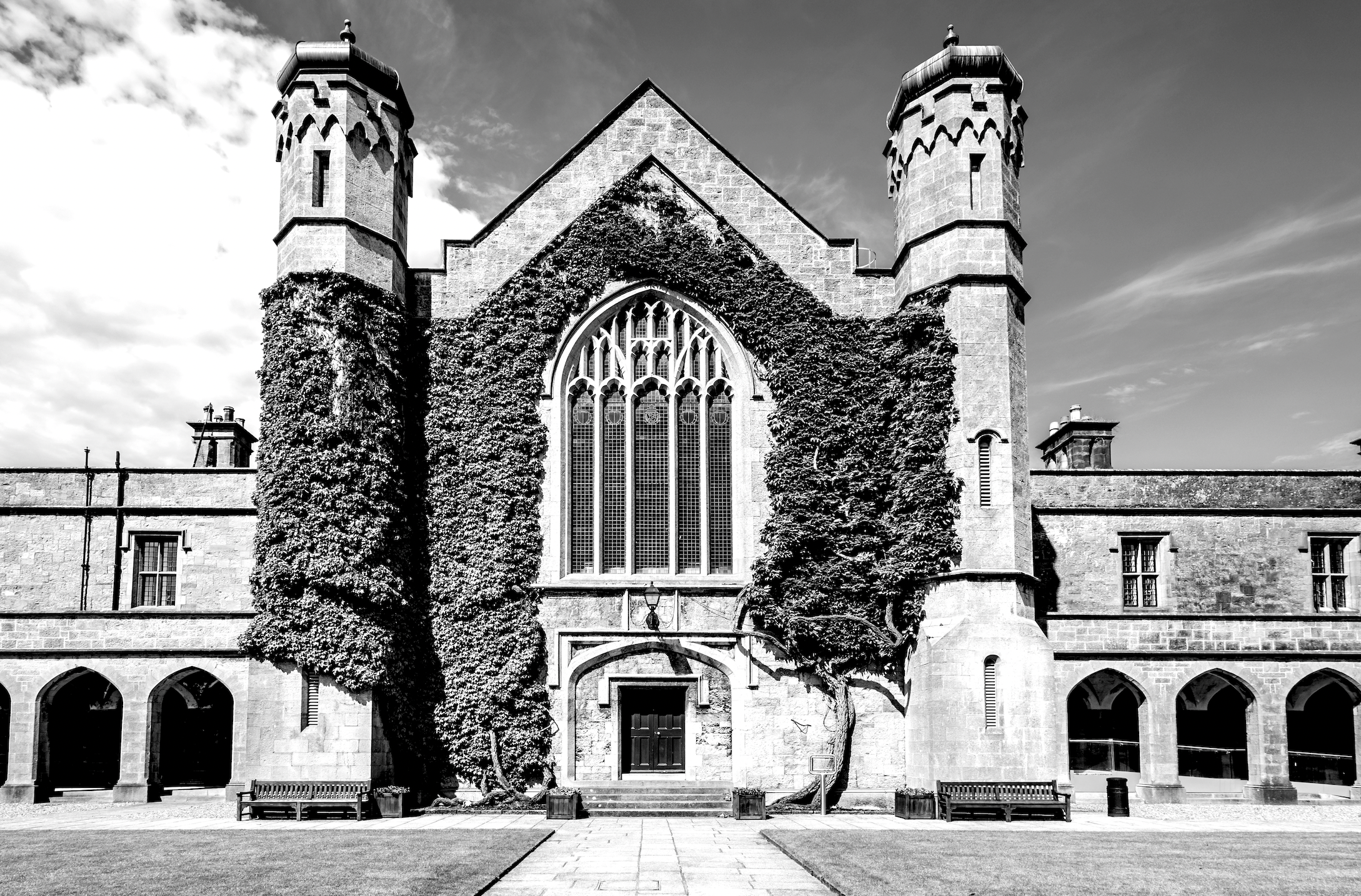
In July 1845
Queen’s College Galway is formally established under the Colleges (Ireland) Act and in December that year, the Royal Charter is granted.
1845
The Very Reverend Joseph William Kirwan is appointed “clerk, first and modern [i.e. current] President”. The university at Galway developed a unique character from its’ foundation, due in part to the financial pressures it faced, the mix of staff and students from different denominations and backgrounds, and the role played by the university in life in Galway.
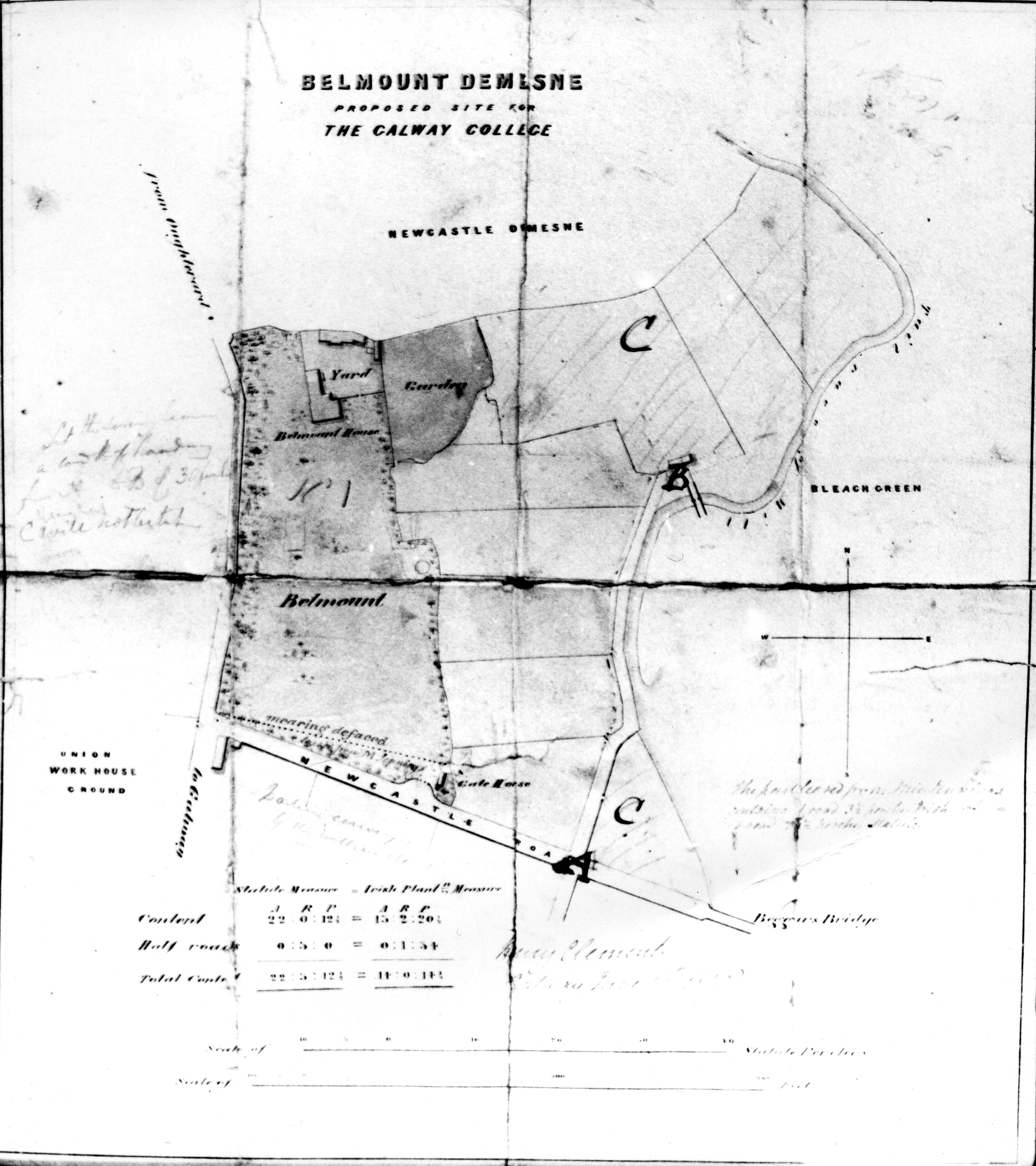
1846
Construction begins on the Quadrangle building vas a famine relief project. Built out of local limestone in Tudor Gothic style, it proudly remains the centrepiece of our university’s architectural heritage.
1849
Our first students arrive – all 68 of them – on 3 November 1849 to study
in faculties of Arts, Medicine and Law. Today, we have more than 19,000 students. The opening was not without problems, including an unfinished building, lack of organisation, the president’s poor health and what the Galway Vindicator termed “the utter prostration of strength throughout our exhausted province”. The university quickly establishes itself with a high standard of scholarship and Galway quickly adapted to being a university town.

1852
Civil Engineering Professor William Bindon Blood would become known as Ireland’s first cyclist, commuting to campus on his self-built tricycle.
George Johnstone Stoney is appointed Professor of Physics and goes on to coin the term ‘electron’.
1863
Geology Professor William King coins the term ‘Neanderthal man’ after fossils discovered in the Neander Valley in Germany.
1870s
The early character of the university is defined by academic staff appointed by the second President, Edward Berwick. Among those who made a lasting impact on their fields of study were Professor King, John Eliot Cairnes, Charles Francis Bastable and William Edward Heron. High standards of teaching were evident in medicine, economic thought, the sciences, the humanities and engineering. Furthermore, the university drew in a range of students from Connacht, west Ulster and north Munster.
This led to an interesting mix of religious denominations within the student body. Many graduates found their way into colonial service, including James O’Kinealy, Sir Peter Freyer and Sir Alfred Keogh. Others, such as the engineer Michael M. O’Shaughnessy, made their mark in the States. The university opened up the professions to the middle classes in the region.
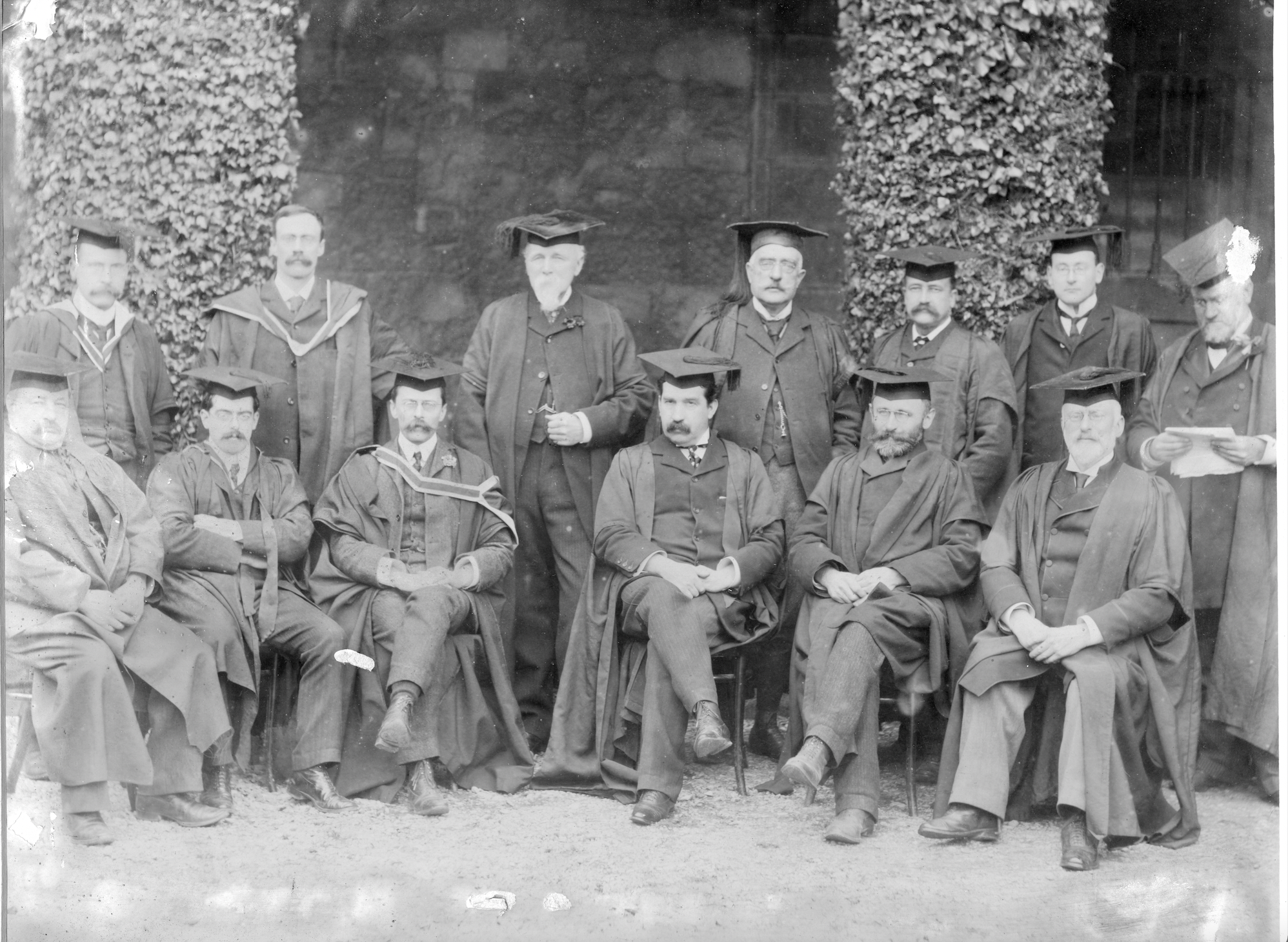
1884
Michael O’Shaughnessy graduates in Engineering. He went on to become San Francisco’s Chief Engineer, working on railroads and water supply systems and commissioning the Golden Gate Bridge. Most famously, he designs the Hetch Hetchy Reservoir in Yosemite. He died 16 days before water flowed to the city from the national park.
1888
Bessie Anderson is our first female graduate.
1901
The university’s sports pavilion opens.
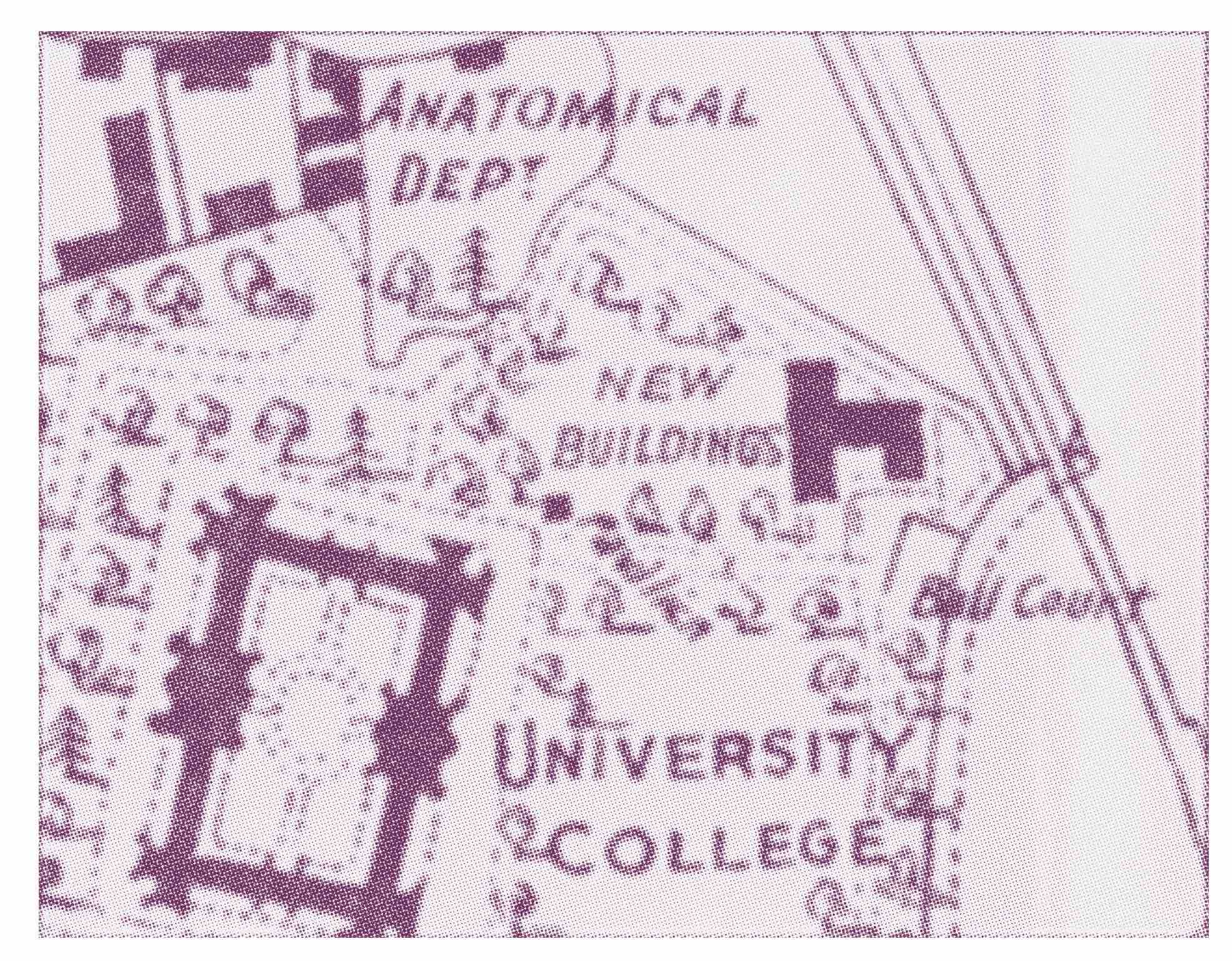
1905
Rosalind Clarke is our first female lecturer.
1906
Alice Perry becomes the first female engineering graduate in Europe.
1908
We are renamed University College Galway –or UCG –following the passing of the Irish Universities Act.
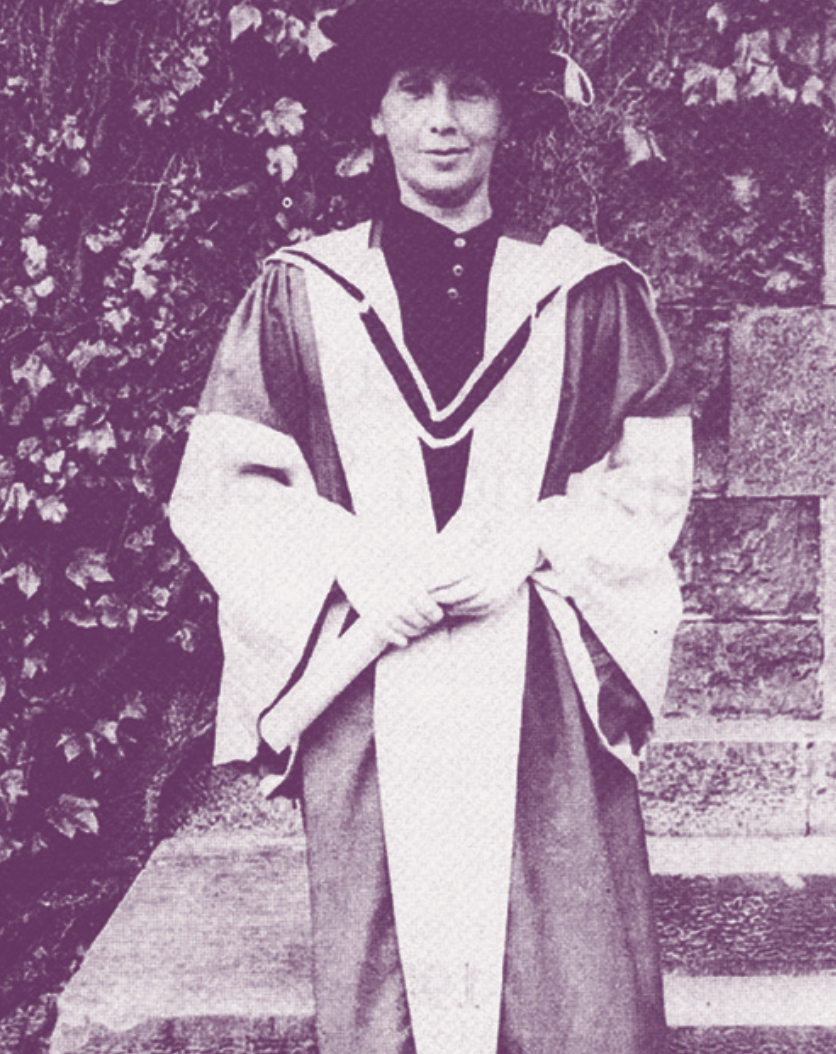
1910
The 1910s proved a revolutionary decade for Ireland, with many of those transformations finding an echo in the university.
1913
The students’ Dramatic Society stages its first production: Shakespeare’s Twelfth Night.
The Connacht Women’s Franchise League forms with a number of women associated with the University active in the suffrage movement.
Intense lobbying by Conradh na Gaeilge sees Irish introduced as a matriculation subject.
1914
Historian, Mary J. Donovan-O’Sullivan, becomes our first female Professor.
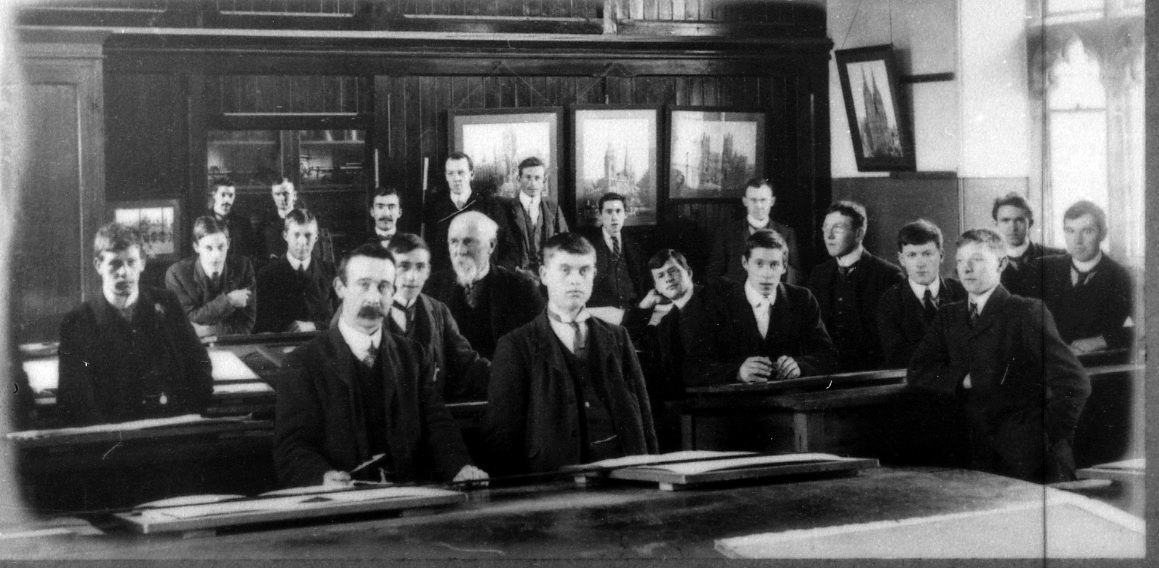
1916
Staff and students including Professor Liam O’Brien and Brigid Lyons Thornton take part in the Easter Rising. Other staff were prominent in the nationalist movement like Seán P Mac Énrí and Thomas Walsh, as well as Dr Brian Cusack, Thomas Hynes and Thomas Derrig.
1917
Emily Anderson is appointed our first Professor of German and achieves acclaim for her translations of the letters of Mozart and Beethoven.
1918
During the December general election, which brought a sea-change in Irish politics, the Spanish flu pandemic hits. Galway suffers badly right through until early summer 1919. The Fever Hospital recorded on average 10 deaths a week.
150 staff and students take part in World War I, with 15 fatalities.
1919
Two university graduates take their seats in the first Dáil – teacher Frank Fahy and Dr Brian Cusack.
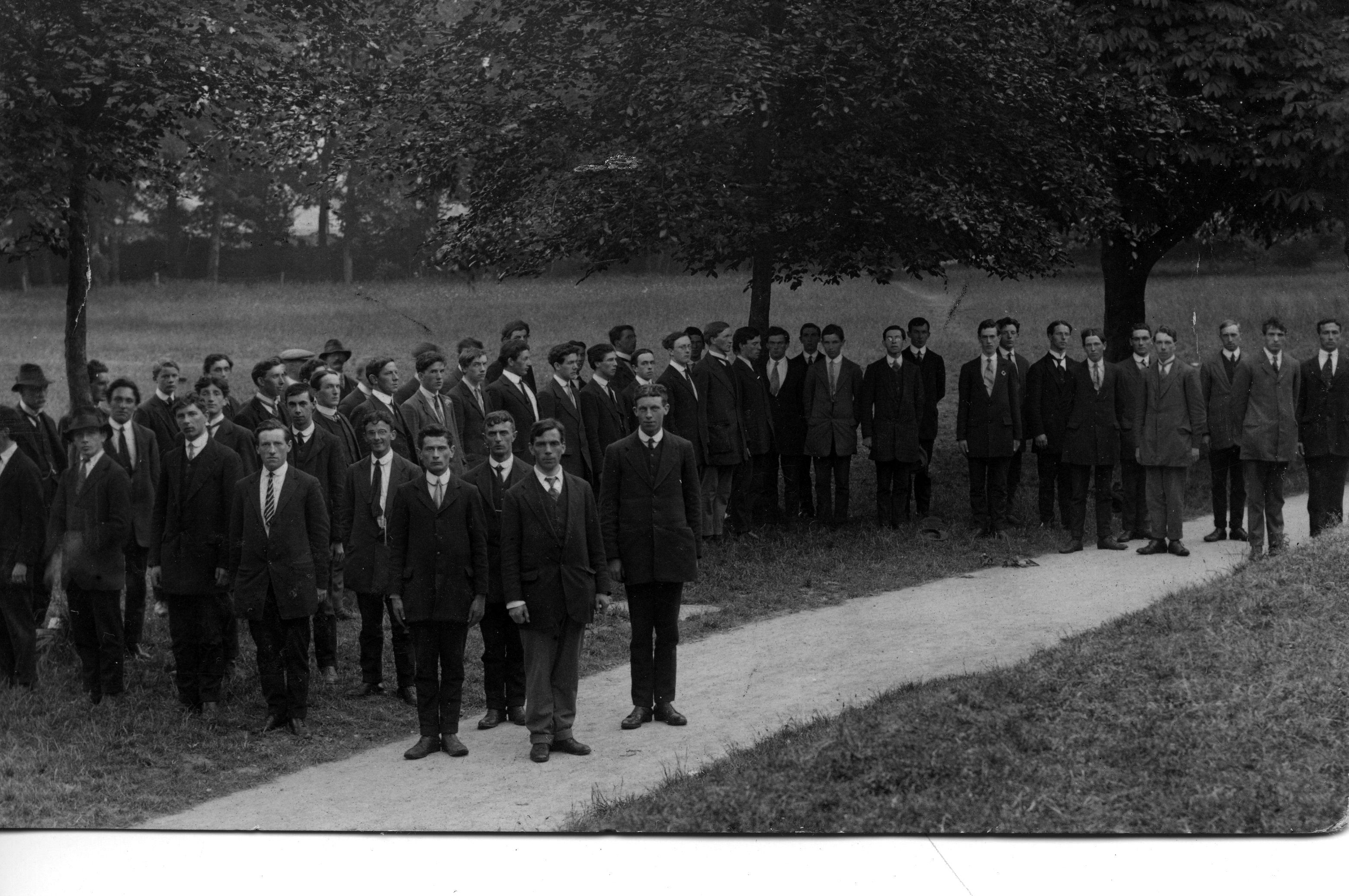
1920s
Female students outnumber male students for the first time in any Irish university.
The relationship between the university and the Irish language has not always been harmonious. The first President, Rev. Kirwan, and James Hardiman sought and failed to have a Professor of Irish established, and it was not until 1897 that a Chair of Irish was permanently established in the university. Intense lobbying by Conradh na Gaeilge saw Irish introduced as a matriculation subject
in 1913. In 1929 the newly established state enacted the University College Galway Act, 1929/Acht Choláiste Phríomh-Scoile na Gaillimhe, 1929, which dealt with teaching through Irish at the university. It was part of a wider attempt by government to make Galway the capital of Irish speaking Ireland (other initiatives at this time included An Taibhdhearc and An Cead Cath at Renmore Barracks). It met the demand for Irish speaking professionals, as well as the development of Irish within academia. It also ensured that those who had Irish as a first language or who wished to pursue their studies through Irish were not disadvantaged. Again, as the demands of society changed the university responded.
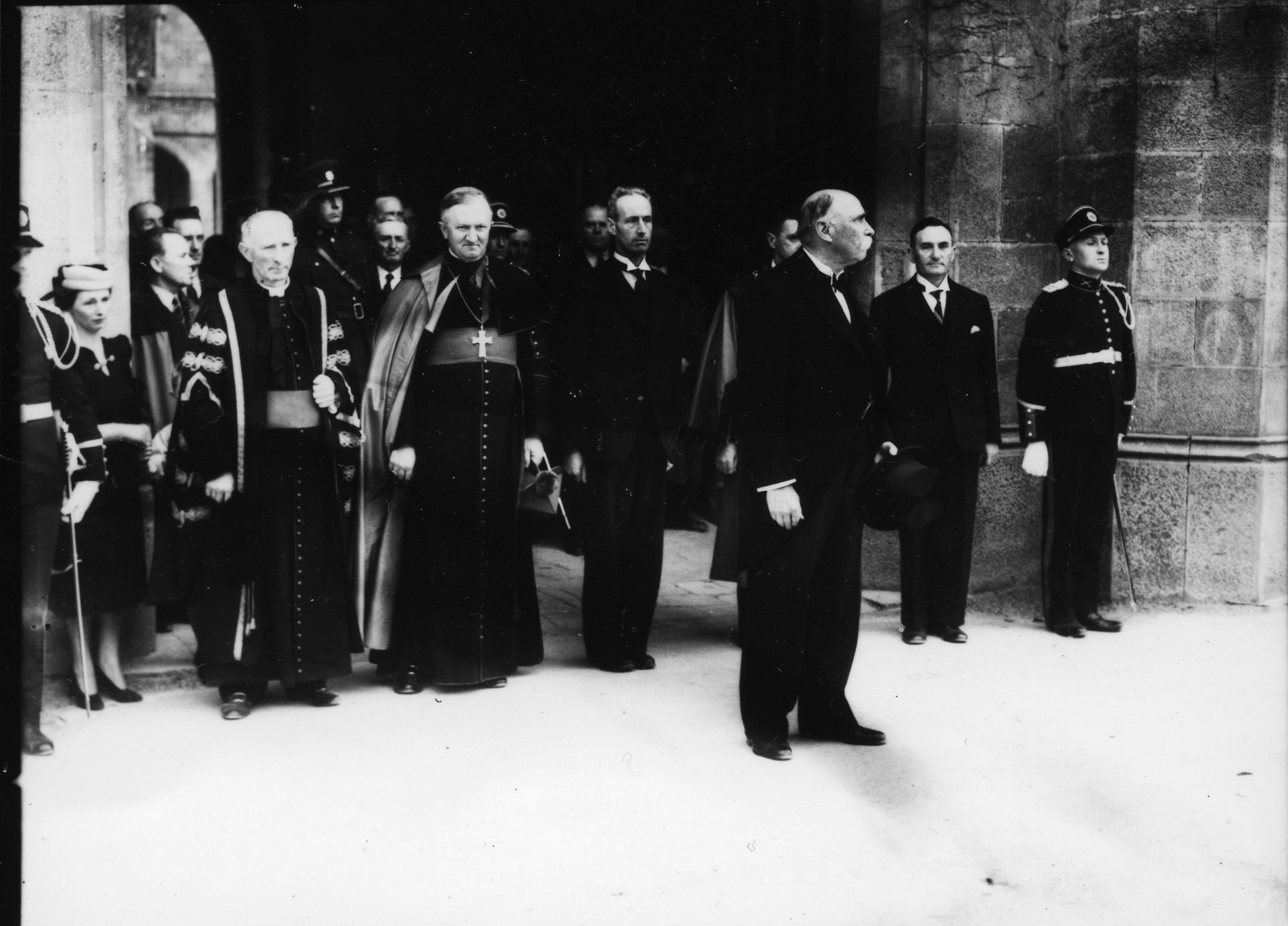
1929
Irish Language Act gives special recognition to the language in the university. The State, in its infancy, enacts Acht Choláiste Phríomh-Scoile na Gaillimhe. It deals with teaching through Irish at the university as part of a wider efforts to make Galway the Irish-speaking capital. It helps meet demand for Irish speaking professionals, the development of Irish in academia and ensures native speakers or those who want to study through Irish are not disadvantaged.
1940s
Post-WWII growth in medical students from Poland and the USA begins a trend for greater internationalisation.
1942
UCG wins Sigerson Cup in Gaelic football for sixth year in a row – the longest winning sequence ever.
1943
Donogh O’Malley graduates in engineering. He goes on to do more as Minister for Education than anyone before or after him when, in 1967, he introduces free secondary school education. Belfast-born screen and stage icon Siobhán McKenna graduates the same year, in Arts. She performed at the Abbey, in London and Broadway as well as on film in the 1960s.
1949
J. R. R. Tolkien acts as external examiner for the first of five occasions.
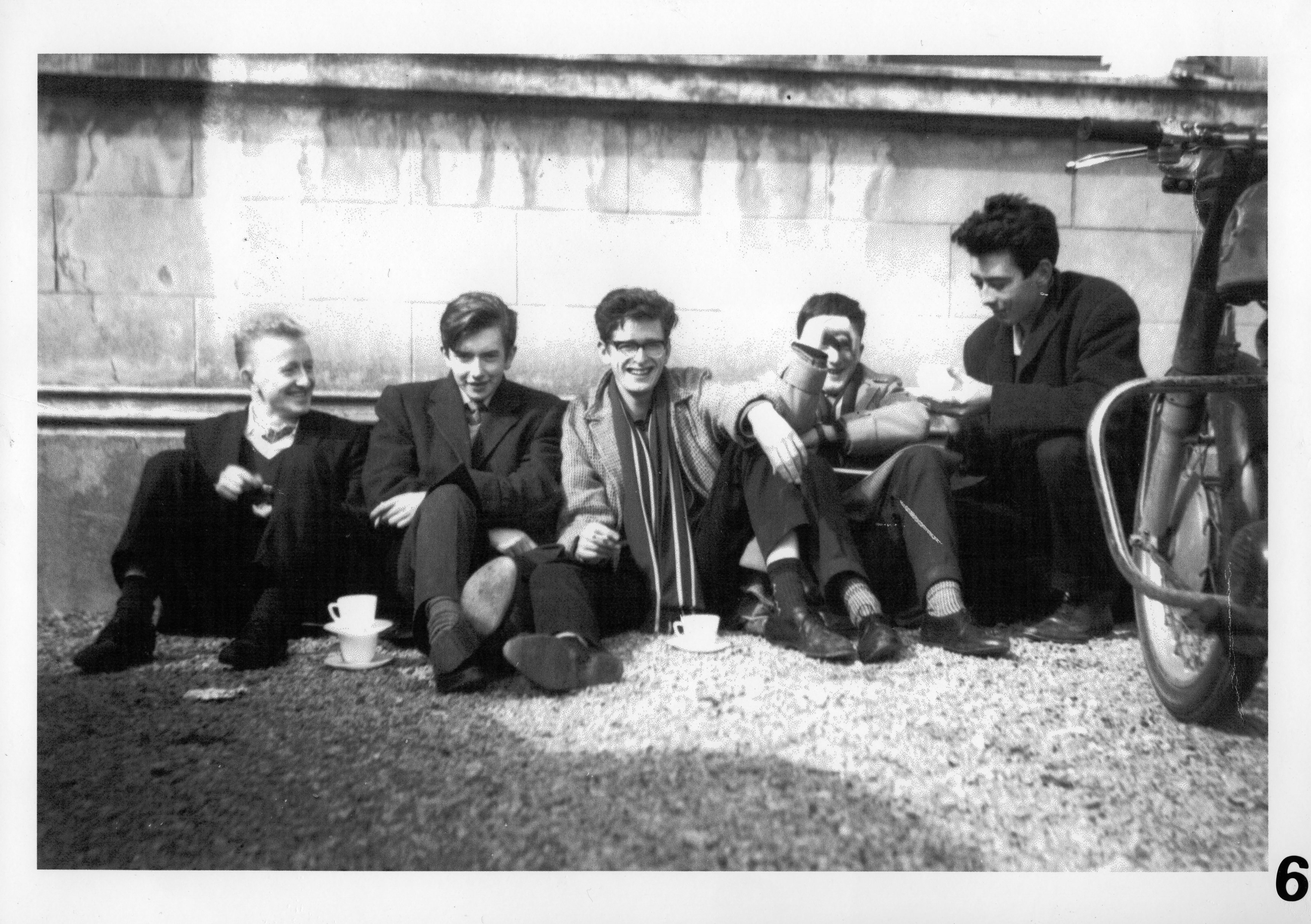
1960
Student numbers pass 1,000
1968
The university acquires new land to expand northwards along the River Corrib. Today, the campus comprises 105 hectares and over 90 buildings.
1969
Student politics includes figures like Pat Rabbitte, Séamus Brennan and later, Eamon Gilmore, all of whom to have long careers in the Oireachtas. Around this time, our student body develops a more questioning spirit, taking its cue from student protests elsewhere and reflecting the issues of the day, including civil rights in Northern Ireland, modernisation of society and social and economic issues.
Adult learning programmes begin and the first army cadet enrols, beginning a distinguished partnership with the defence forces.
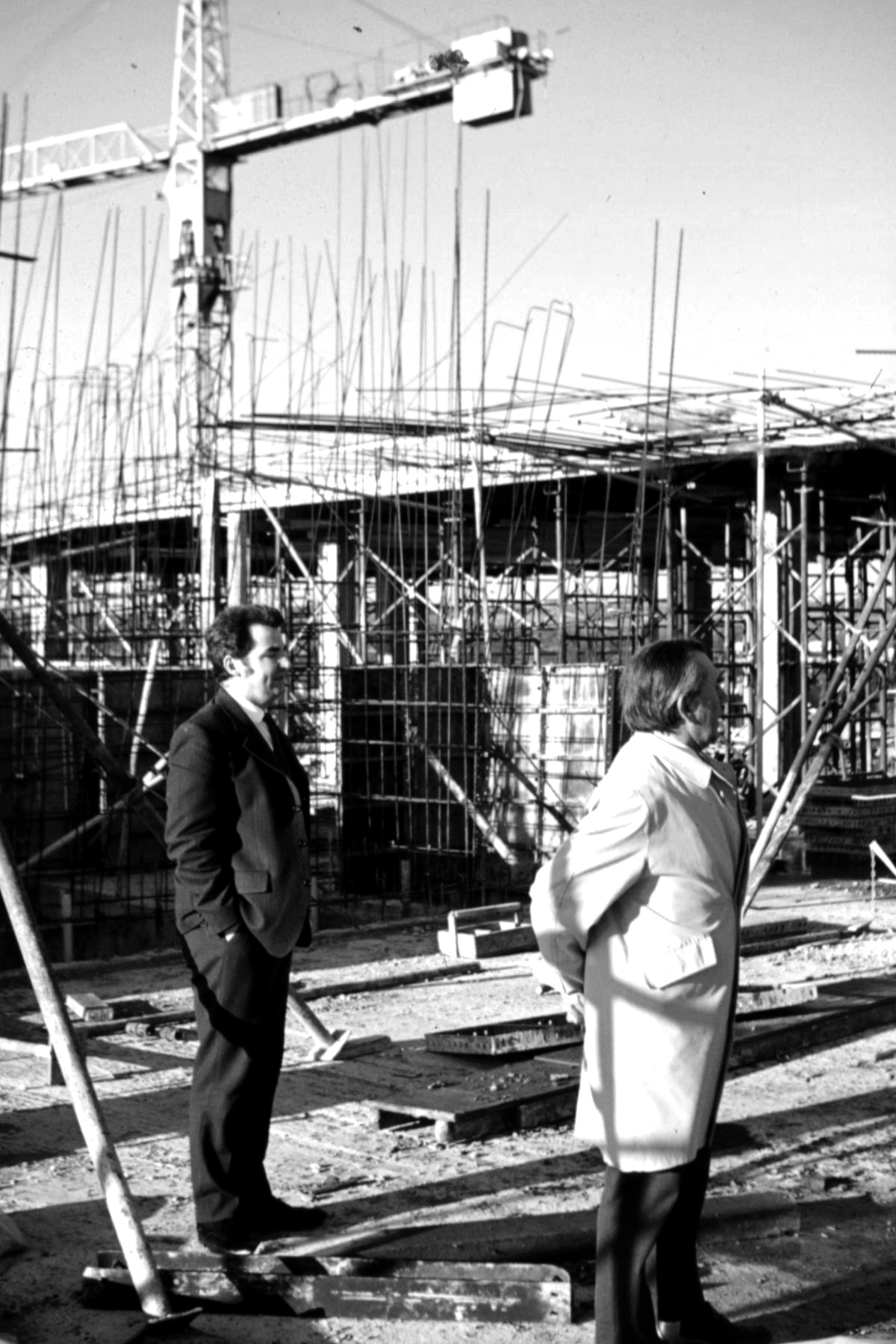
1970s
The university underwent dramatic change in the 1970s, as did Galway. With the population of Galway reaching 40,000 at the time and rising at a rate of 1,000 a year, almost 10% of the population either worked or studied in the university. This reflected the introduction of free secondary education and grant-assisted third-level education. The student body had a more questioning spirit, taking its’ cue from student protests elsewhere, and reflecting the issues of the day, including civil rights in Northern Ireland, the modernisation of Irish society and a host of social and economic issues.
In the cultural sphere, UCG Dramsoc and similar student societies produced the founders of many cultural bodies in the town, including Druid, the Galway Arts Festival, MACNAS and Music for Galway.
The success of Gaeltarra Éireann (subsequently Udarás) and the IDA in attracting industry to the region led to a demand for graduates in the sciences, commerce and engineering.
Similarly, the expansion of University College Hospital Galway led to a greatly enhanced School of Medicine and, perhaps more so than any university in Ireland, the integration of the university into almost every aspect of society in the city of Galway.
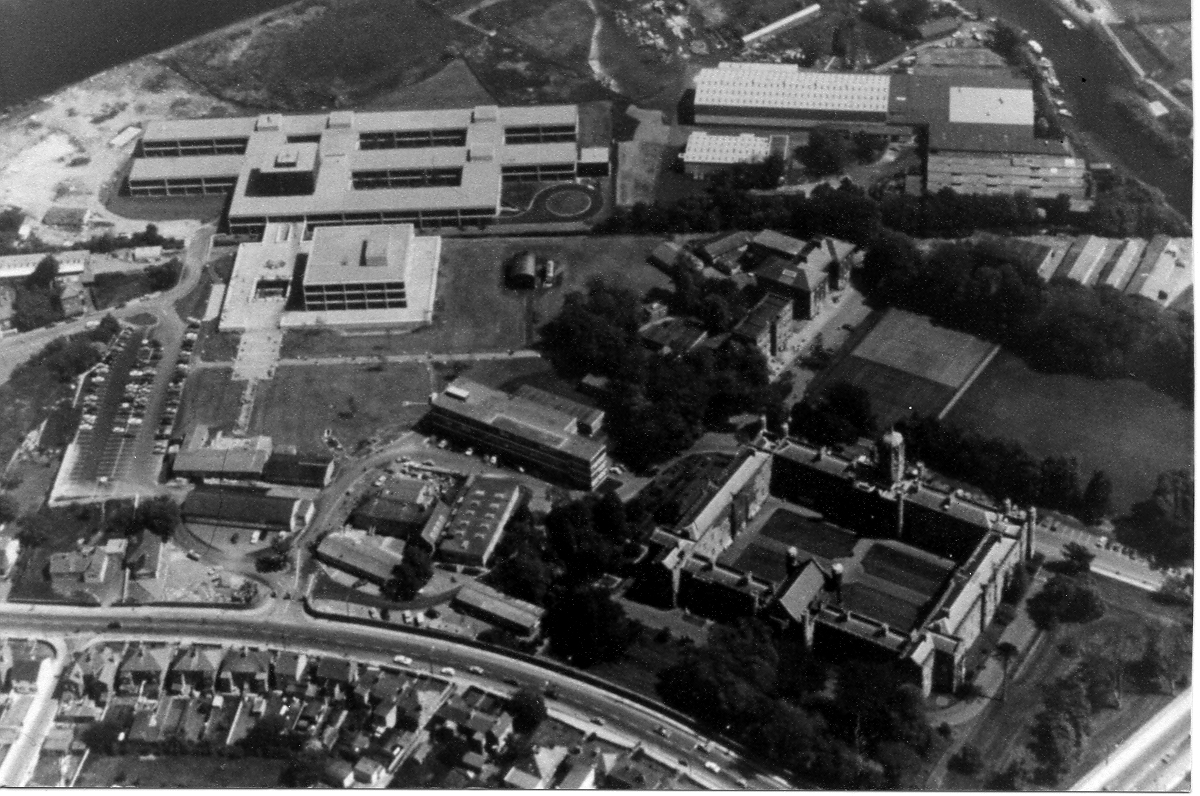
1973
James Hardiman Library opens its doors in a modernist building designed by Scott Tallon Walker.
1974
The Arts/Science Building is opened by President Erskine Childers.
1975
Graduates include Galway All- Ireland Hurling champion and future GAA president Joe McDonagh, arts visionaries and Druid Theatre founders Garry Hynes, Marie Mullen and Mick Lally.
1977
After years of studying and lecturing at UCG, the future President of Ireland Michael D. Higgins leaves the university to enter a political career. Meanwhile, human rights activist, Kevin Boyle, is appointed full-time as our first Professor of Law.
1978
Playwright Thomas Kilroy is appointed Professor of English and the renowned Galway Arts Festival is founded by the UCG Arts Society with local arts groups.
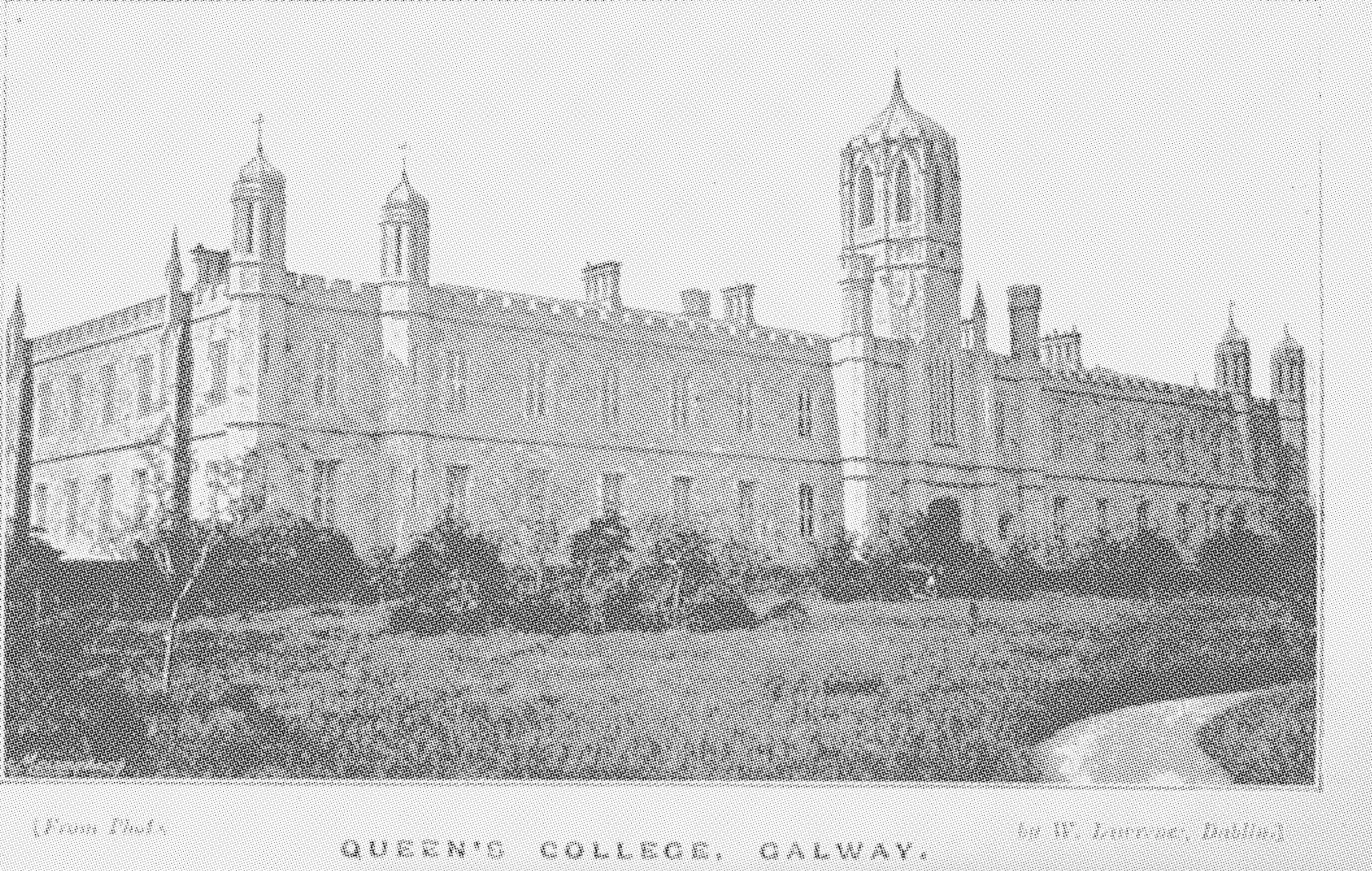
1980
UCG opens its first Gaeltacht centre in An Cheathrú Rua, followed by Carna and Gaoth Dobha
1984
US President Ronald Reagan visits campus to receive an honorary degree, prompting protests from some staff and students.
1986
Macnas performance company is founded on campus, where it is still based.
1988
The Aula Maxima goes on fire, destroying the university’s grand piano.
1990
Our first Erasmus students go overseas and St Anthony’s Friary is converted to a Business School.
1991
Our first on-campus student accommodation opens in Corrib Village.
1993
Dr Tony Ryan donates €3 million towards the creation of a marine science research centre.
1997
Our third name change in 175 years – UCG is renamed the National University of Ireland Galway or NUI Galway for short.
The first Galway Science & Technology Festival takes place. Today, it attracts more than 20,000 people to campus.
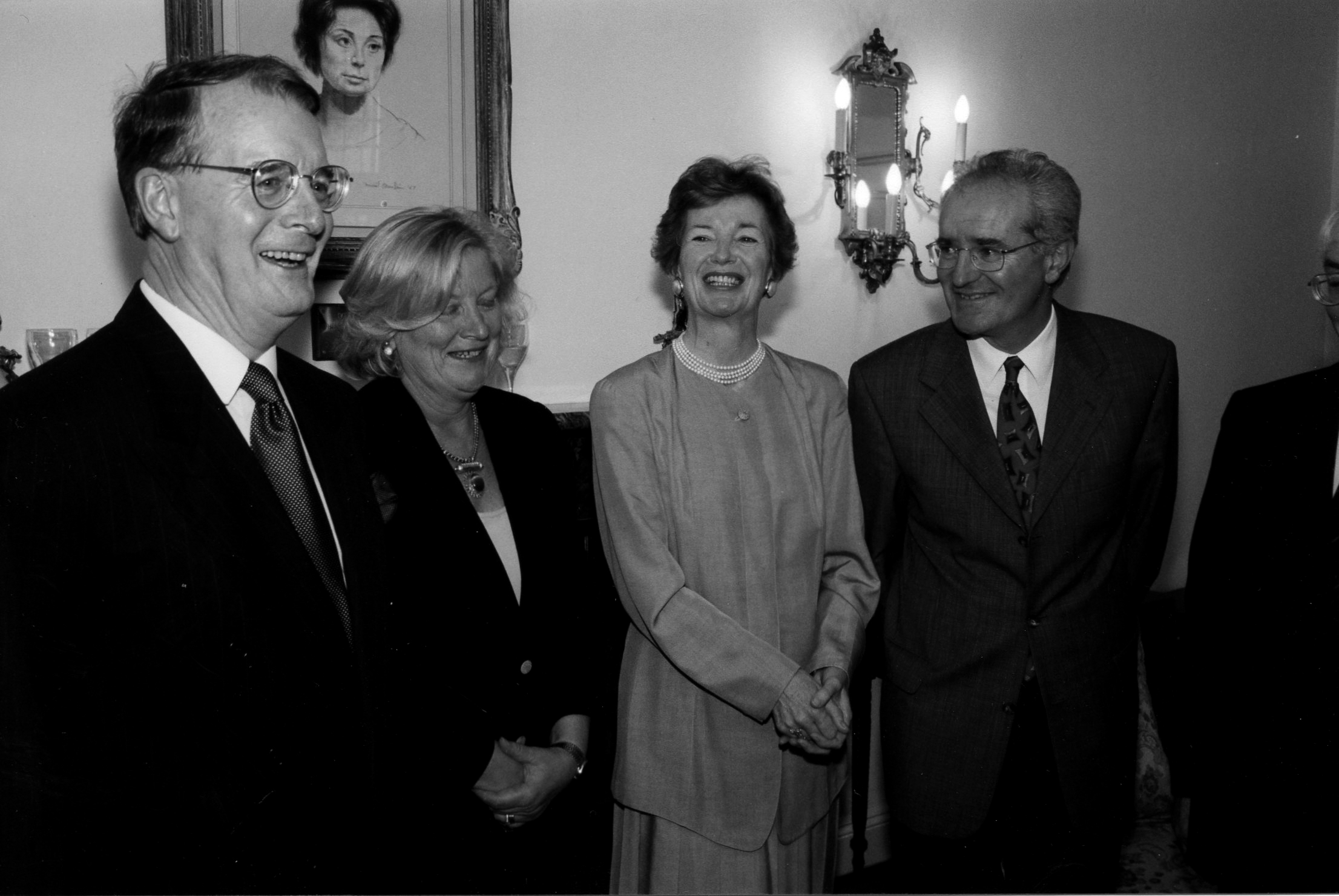
1998
103-year-old Bridget Dirrane becomes the oldest Irish person to receive an honorary degree.
Galway University Foundation is established to encourage philanthropy.
1999
Hillary Clinton launches the Millennium Lecture series on campus.
2000s
With the rapid expansion of access to university, especially among non-traditional cohorts of students, the university has responded with an unprecedented building programme on the bank of land built up by Gerry Lee in the 1970s up as far as Dangan.
The demand for research in recent years has impacted on every aspect of the university’s activity, and the digital shift has seen the university respond in agile and innovative ways.
Most recently, with the unprecedented demands placed upon teaching, research and university life, the university community continues to respond to the needs of society. In doing so, this resilience is based, in part, on a commitment to teaching and learning to the highest international standards. It is also based on a close connection within the university community itself and close integration with the Galway region. It is a resilience based on 175 years of experience.
2001
John McGahern is appointed Adjunct Professor of Irish Studies.
2003
In a momentous year, Atlantic Philanthropies donates €18m for building projects, Nelson Mandela receives an honorary degree on campus and the Huston School of Film & Digital Media is opened by Angelica Huston in memory of her father, John.
The philanthropy coincided with an unprecedented building programme.
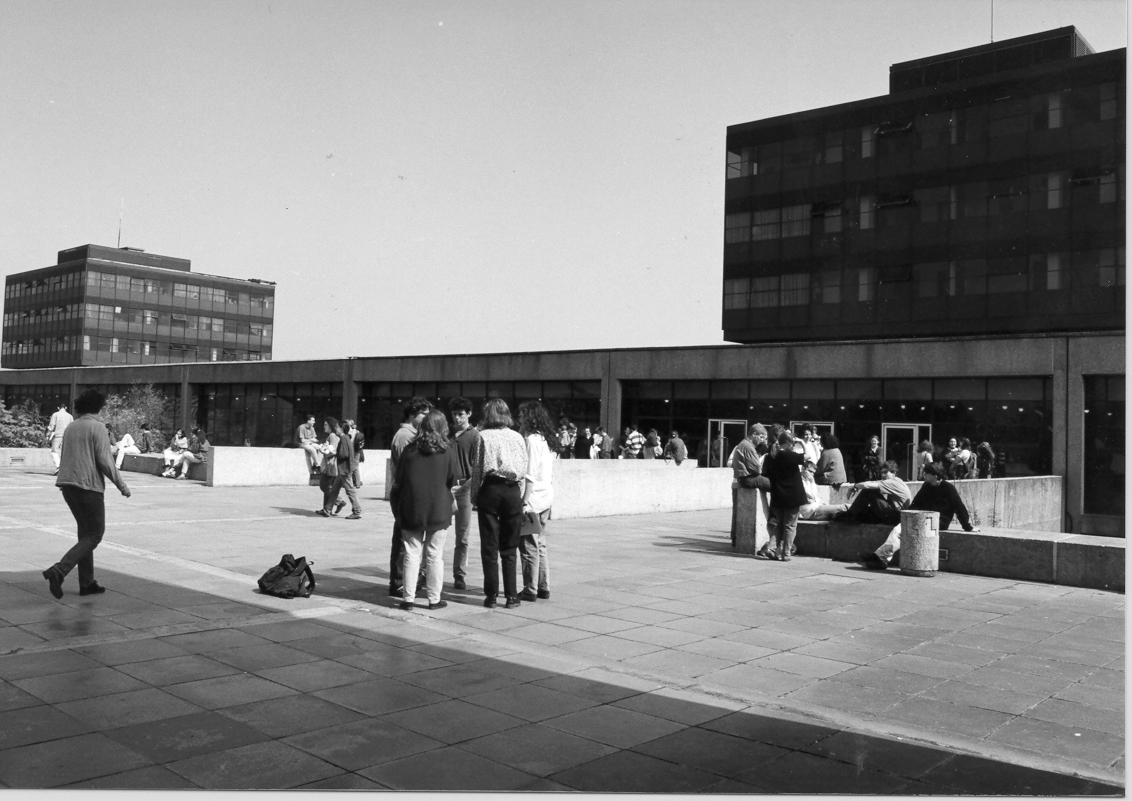
2004
Acadamh na hOllscolaíochta Gaeilge is established further the development of Irish-medium education.
2006
The university launches a €368 million investment in new buildings and research facilities.
2008
The €22m sports centre opens on campus and the Beijing Olympics Medicine graduate Paul Hession becomes Ireland’s fastest man. His record still stands.
Former arts graduate and history professor, Nicholas Canny, is appointed President of the Royal Irish Academy.
2011
Law graduate, Máire Whelan, becomes Ireland’s first female Attorney General.
The new Engineering Building is opened and is named Ireland’s favourite new building.
The same year the first UNESCO Chair is awarded to an Irish university in the area of child and family research.
International student numbers exceed 1,000.
2012
The university launches five major Research Institutes bringing together interdisciplinary expertise in Medtech, data science, public policy, social sciences, and marine, energy and environmental science.
The Youth Academy is launched to engage 10 to 12 year olds in their passions.
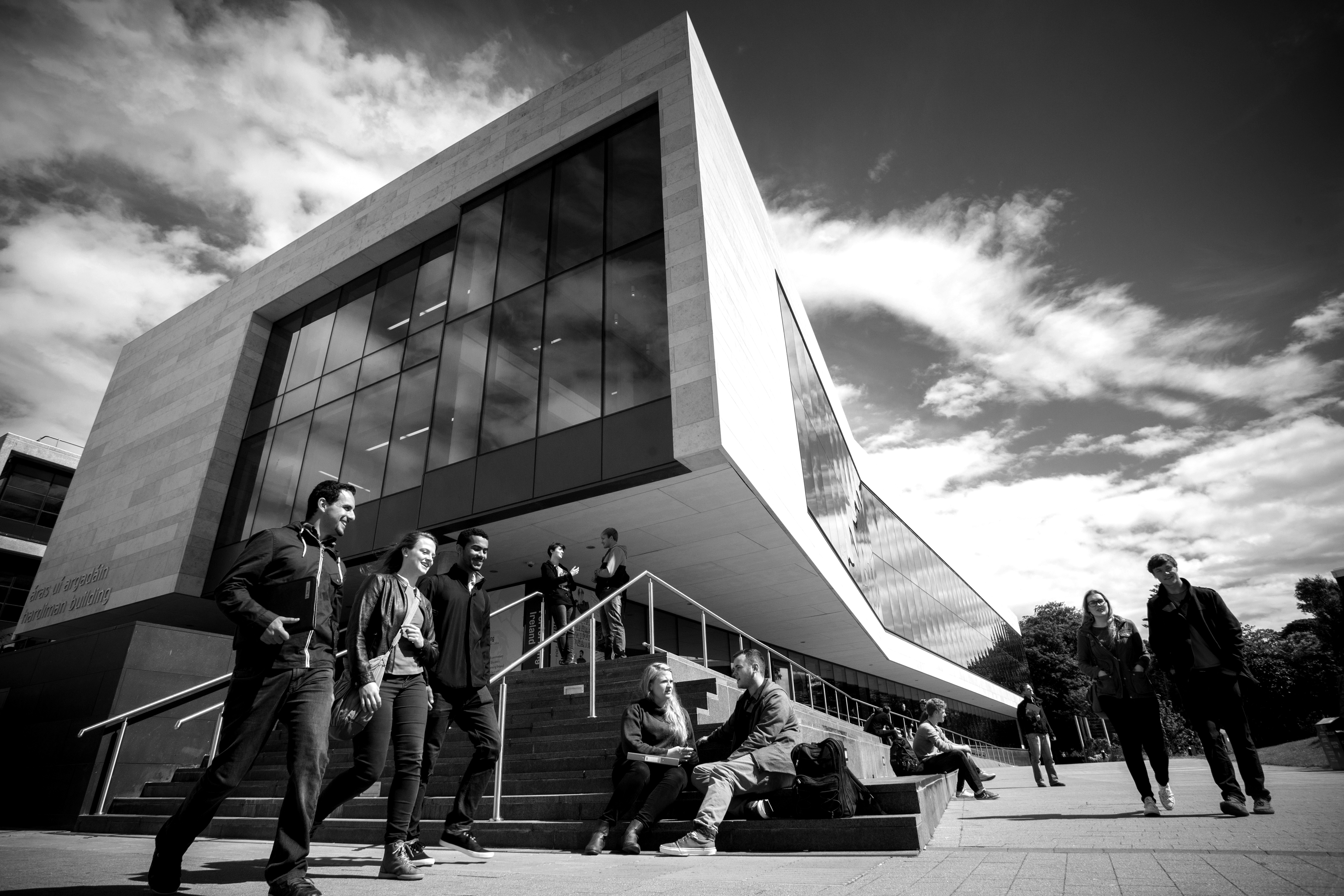
2013
Our annual research income exceeds €50m and our first Medical Academy opens in Ballinasloe, followed by hospitals in Mayo, Sligo and Donegal. The €88m Insight centre for data analytics is launched by SFI.In the Arts the University begins digitising the Abbey Theatre archive, the biggest project of its kind in the world and in sport, we launch a rugby academy with Connacht Rugby.
2014
NUI Galway is named most biodiverse campus in Ireland, with 581 species recorded in one day. Meanwhile, the Science Without Borders scheme brings over 300 Brazilian students to Galway.
2015
Prince Charles visits the University founded by Royal Charter from his great-great-great-grandmother. The same year Shannon College is incorporated into the University.
2016
Cúram – the SFI research centre for medical devices launches. Galway is named European Capital of Culture for 2020. And the O’Donoghue Centre for Drama, Theatre and Performance opens and is named Ireland’s favourite new building.
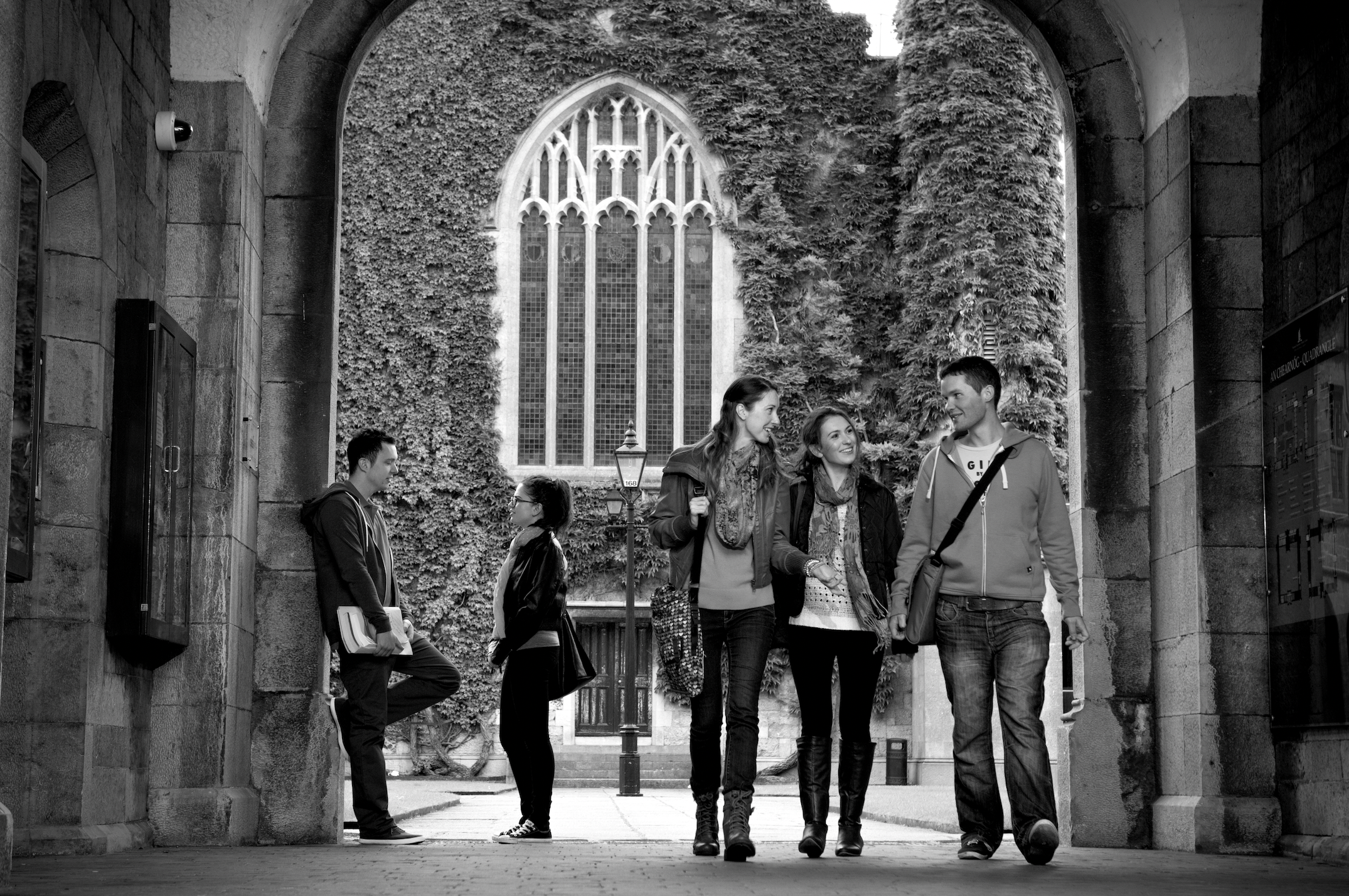
2018
The university achieves an Athena SWAN Bronze Award, recognising our progress in eliminating gender inequality.
2019
We are designated a University of Sanctuary and awarded the Green Campus Flag.
2020
NUI Galway launches a new strategic plan to create a university based on shared values of respect, openness, sustainability and excellence.Galway is named European Capital of Culture.